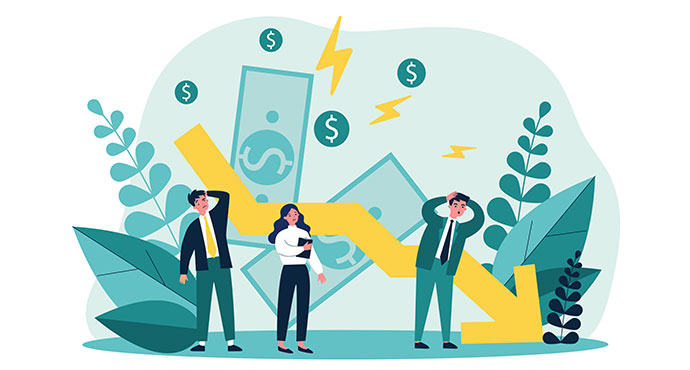Declaring Bankruptcy in Perth & WA
Declaring Bankruptcy In Western Australia
If your financial situation has become overwhelming, and you’ve explored all other viable avenues in Perth, bankruptcy may be your best option. Bankruptcy is a legal process that releases you from your unsecured debts, allowing you to make a fresh start.
While it has some notable consequences, the positives typically outweigh the negatives. You’re eligible for bankruptcy in Western Australia if you can’t pay your debts as and when they fall due and you are present in Australia or have a residential or business connection in Australia. There’s no minimum or maximum amount of debt required to enter the process.
You can become bankrupt in Perth in two ways: a creditor’s or debtor’s petition. In the first, a creditor forces you to become bankrupt. In the second, you decide to become bankrupt. Our Western Australia bankruptcy specialists can manage the process for you, helping you with the paperwork and working as your registered bankruptcy trustee.

The bankruptcy process in Perth

Lodging A Petition
If we’re unable to help you pay your debts or come to a suitable arrangement with creditors, we’ll help you fill out the relevant forms and lodge a debtor’s petition to become bankrupt.

The AFSA Decision
If your application is accepted by the Australian Financial Services Authority (AFSA), you become bankrupt. The decision typically takes 24-48 hours. You’re unable to change your mind after lodging.

Trustee Takes Control
After appointing us as trustee, we take control of your property and debts. In order to pay creditor’s, we’ll sell some assets, recover any income, and investigate your financial situation. The process typically wraps up in three years.
Success Story

Leigh had debts of approximately $60,000 and couldn’t afford to service it on his current income.
He had placed his Perth based company into liquidation six months earlier due to solvency issues and needed to avoid any personal action being taken against him. He solely held real property with net equity of less than $10,000 and a vehicle of minimal financial value.
After already losing his business, Leigh didn’t want to lose his house as well. He was feeling highly stressed and felt out of his depth.
Our Solution
When he reached out to us, we could sense his distress and spent time discussing his situation and allowing him to offload the burden, which he had been dealing with largely on his own. After assessing his finances, the only viable option at this stage was bankruptcy.
Our bankruptcy solution included entering a deed of forbearance, ensuring he kept his home in Western Australia. This allowed him to make affordable payments over the bankruptcy period towards his bankrupt estate whilst continuing to pay off his vehicle.
Positive Outcome

Unsecured Debts Wiped
Leigh was able to save over $45,000 through the bankruptcy and is now discharged.

Kept His Home And Vehicle
The deed of forbearance ensured he kept his home. He was also able to repay his vehicle, allowing him to retain the vehicle.

Freedom To Start Over
With no more harassing calls and better cash flow, he could breathe and start afresh.
You're In Safe Hands

Judgement-Free
At Revive Financial, we care about the stress and impact being in debt has on your wellbeing. We want to help you take back control with no judgement, just a helping hand.

Financial Professionals
Revive Financial is proudly Australian owned and lead by a team of Chartered Accountants. Our qualified team have been helping Australians become debt free since 2005.

Industry Leaders
Our dedicated team have been trusted by over 10,000 Australians to help take back control of their financial futures. It's what we do best so you can rest assured.
Our Customers Love Us

Download Our eBook
Learn how to turn negative to positive today with a FREE ebook produced by our team of finance professionals, just for you. This helpful guide outlays all of the debt management options available and will assist you in understanding how you can take back control of your financial future.
Thank you for downloading our eBook. A copy has also been emailed to the address provided.
Frequently Asked Questions
How long does bankruptcy last?
Bankruptcy typically lasts for 3 years and 1 day, plus two years after you are discharged from bankruptcy (generally 5 years in total). It can be extended to up to 8 years under certain circumstances, such as not complying with requests made by your Bankruptcy Trustee.
There is legislation currently in parliament that proposes changes to Australia’s insolvency laws. This legislation proposes to shorten the bankruptcy period to 1 year. Should the legislation be passed, it will also apply to all existing bankruptcies.
What debts can be included in bankruptcy?
All unsecured debts such as: tax debts, credit card debts, personal loans, store cards, school fees, debts under personal guarantees and utility bills.
You must continue paying some debts during your bankruptcy period. These include: Penalties and fines imposed by the court, Unliquidated damages, Child Support and Certain Centrelink Debts, HECS and HELP debts and debts incurred after your bankruptcy begins.
Bankruptcy does not include secured debts, such as a mortgage or vehicle loans; as such, if you fail to make the repayments on these debts, the creditors are within their rights to repossess the security (home or car) and sell it to recover their money. If the creditor sells the asset and a shortfall arises (more is owed than the amount sold), the shortfall will be included in the bankruptcy.
How long is bankruptcy noted on my credit file?
Your bankruptcy will remain on your credit file for the entire period of bankruptcy plus two years after your a discharges (generally 5 years total).
Your name will also appear on the National Personal Insolvency Index (NPII). This is a register of all personal insolvency activity. Your name is on the NPII for life.
Related Articles
Bankruptcy and Your Credit Score: The Facts
If you find yourself in a position where you’re unable to pay your bills, have growing debts like credit cards and loan repayments and your weekly income is not enough to meet your day-to-day living expenses, then you could be facing personal insolvency.
Read moreKeep Trading as a Sole Trader if you are Bankrupt
After years of working to build your business from the ground up, the thought of losing it all because your personal finances are dire is a nightmare. It is still possible to keep trading as a sole trader if you are bankrupt or personally insolvent. We expose how to save your business when things are tough!
Read more
